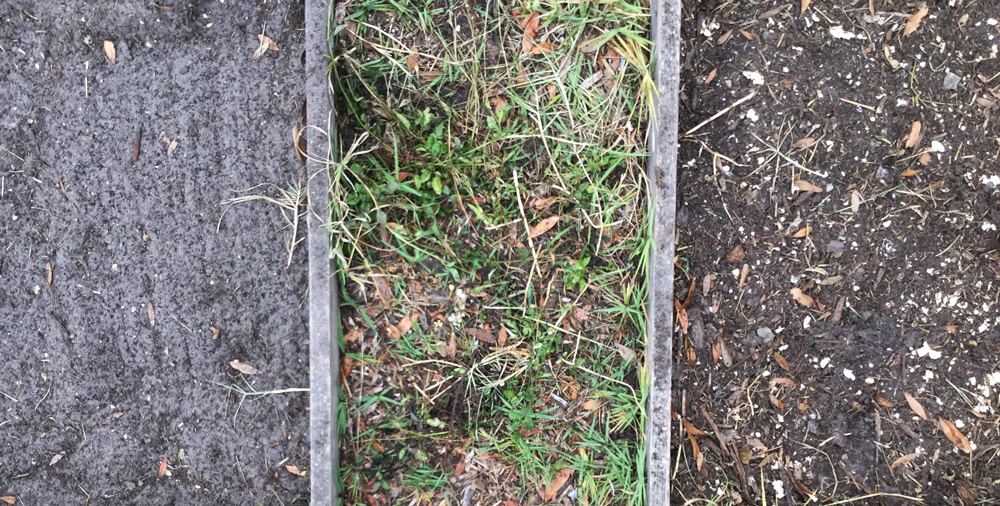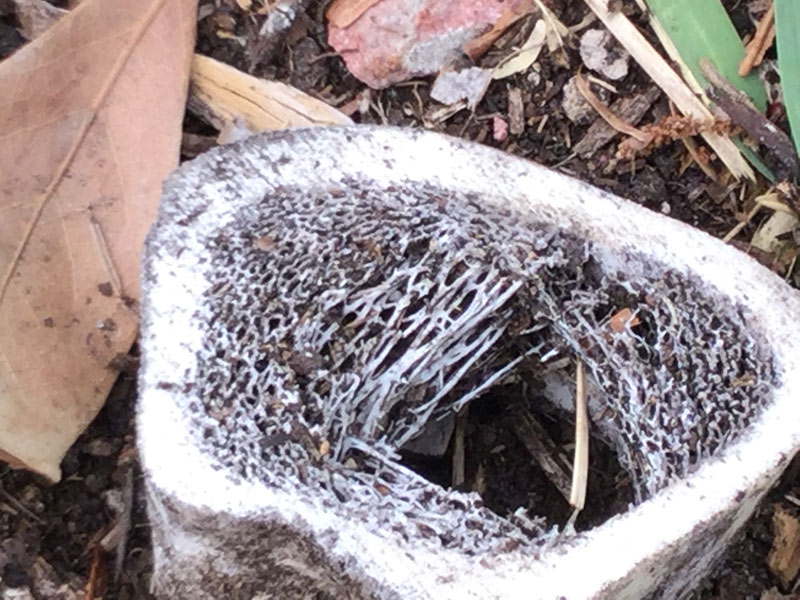If you’ve read my book Compost Everything: The Good Guide to Extreme Composting or watched my presentations during multiple Home Grown Food Summit events, you know that I recommend building compost piles right where you plan to garden in the future.
Go ahead — build ’em right on your garden beds!
After following my advice, long-time reader W. R. sent me a composting field report:
“It is good to see you all are having fun in the tropics. I watch your videos weekly.
I haven’t been doing a whole lot of active gardening, but I wanted to give you a little update in photos.
I have two to 4’x 8′ raised beds next to each other that were left fallow since last fall. They were both recently cleared of weeds and grass, and here you can see the difference between them:

The left one is a native soil I started adding kitchen scraps to, but not for very long. It also was more exposed to the sun. The right one was a compost pile I threw kitchen scraps and coffee grounds in.
This bed had more growing in it, and the soil was more protected by the sun. The right one looks more like good soil, eh?”
This is a great illustration of what in-bed composting accomplishes. It just makes sense to build compost piles on top of garden beds.
Why Compost on a Garden Bed?
Less Materials Handling
When you compost directly on top of a garden bed, you don’t have to worry about moving as many materials.
You throw your kitchen scraps, leaves, rabbit manure, etc., right onto a bed. Don’t worry about it getting hot — it will rot down over time.
If you want it to compost hot and fast, build up a compost pile higher over the bed like I do in this video:
But really, nature will handle it.
Throw everything down on a garden bed and then some months later when you’re ready to plant, fork off the rougher stuff onto the next closest bed and get planting.
More Good Stuff Stays Where You Want It
Second, all the good leachates that would normally run into ground beneath a compost bin are instead transferred right into the ground where you will be growing.
If you’re ever moved a compost pile and seen the right worm-filled soil beneath it, you know what I mean. If you’re not planting that area, it’s a waste!
W. R. has also been composting meat and bones like a good extreme composter should:
As bones break down in the soil, they will feed your garden long-term. Yes, I know you’re “not supposed to compost meat” and all that. Heck with those rules — if you throw those materials away, you’re throwing away nutrition for your garden. There are plenty of ways to compost meat safely, though that’s fodder for another article.
For now, I just urge you to quit working so hard and start composting right where it will make the biggest difference.
Wherever you compost, good fungi and bacteria populations explode, worms arrive and till the soil, plus you don’t have to move your compost all over the place.
Though I do still have a bin, I also keep a compost pile going on one of my garden beds at any given time. It works.
David The Good is a Grow Network Change Maker, a gardening expert, and the author of five books you can find on Amazon: Compost Everything: The Good Guide to Extreme Composting, Grow or Die: The Good Guide to Survival Gardening, Totally Crazy Easy Florida Gardening, Create Your Own Florida Food Forest, and Push the Zone: The Good Guide to Growing Tropical Plants Beyond the Tropics. Find fresh gardening inspiration at his website TheSurvivalGardener.com and be sure to follow his popular YouTube channel.









COMMENTS(12)
My ‘farther away’ compost pile is a magnet for gophers, ground squirrels, mice and rats etc.
I don’t want to poison them or eat them…. How can I get them not to ‘Buffet’ in my garden beds,
if I use this simpler, ‘in the garden bed’ system? Jane
They will almost always show up. Generally, I let them do what they like. However, if they became real pests I would likely make compost in closed bins with hardware cloth screening to keep them out. It seems we’re always sharing with nature even when we’d rather not.
My German grandparents always had a hole/pit approx. 3″ x 3″ in the garden for compost … they called it the “misthaufen” (spelling?) And I remember it being in different places, maybe every year … and it was usually close to a fruit tree, if I remember right.
I’ve done something similar – it works very well!
You can see me pit composting here:
https://www.youtube.com/watch?v=qCPRClS6-tY
You showed us here how to make the compost pile. How do you manage to Turn it? This is one of the hard parts, esp if one isn’t strong. Then you have to move it all over. Some of us aren’t up to that strenous work any more. Got some tips for that?
Hi Stephanie,
You don’t need to turn it except at the end when you move what’s left to another bed. Just let time and the worms do it instead – it will break down nicely.
Most of the time I don’t turn piles unless I need fast compost.
how long does the compost need to sit there? over a year?
In my climate, only about 3-4 months. However, I live in the tropics where it’s warm and humid. When I lived in a climate with cool winters, it took more like 6 months to a year.
Im new to this, but my question is can I just throw egg shells and coffee grounds on top of a bed that surrounds an avocado tree I just planted? what will it do?
The bones and meat you are referring to is that cooked or raw or does it matter.
Do I need to weed the garden bed first or just start putting material on top of weeds?
Good question. If you have enough material, just throw it all on top and it will smother the weeds – unless they’re very persistent weeds. In that case, you can throw some cardboard or thick leaves down first.